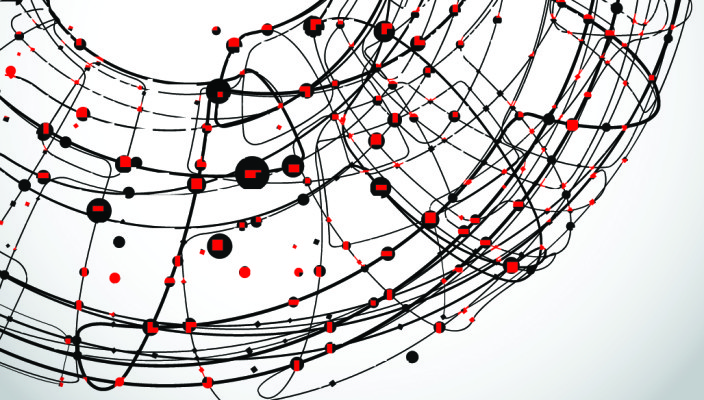2018 Year in Review: IoT, AI and Augmented Reality Drive Field Service Innovation
Dec 12, 2018 • Features • Artificial intelligence • Augmented Reality • Coresystems • Future of FIeld Service • manuel grenacher • field service • field service management • Internet of Things • IoT • SAP • Proactive Maintenance • Service Automation • Service Innovation and Design
Manuel Grenacher, CEO, Coresystems, reflects back on some of the big predictions he made earlier this year and reflects on the progress made in interweaving the Internet of Things, Artificial Intelligence and Augmented Reality into the fabric of field service delivery across the last 12 months...
The days are getting shorter and colder, which means the holidays are approaching and 2019 is just around the corner (believe it or not!). So now is the perfect time to take a look back at 2018 and take stock of the advancements the field service industry made this year.
Back in March, we highlighted three trends we predicted would have major impacts on the field service sector in 2018. We noted that while 2017 introduced innovative new technology-based trends with the likes of artificial intelligence (AI) and augmented reality (AR), 2018 would bring real-world applications that put those buzzwords into practice.
So let’s review the progress of each of those three trends this year – after all, predictions don’t mean much if you don’t evaluate how accurate they were, right…?
The IoT Drives Proactive Device Maintenance, Service and Repair
Since the Internet of Things (IoT) became an integral part of almost every business’ technology mix midway through this decade, field service innovators have been finding ways to use the increased connectivity of the IoT to gain a competitive advantage. We predicted that in 2018, further innovation would allow field service technicians to utilize the IoT and automation in today’s devices – with the goal of providing service in real-time to meet (and exceed) customer expectations.
As is often the case in the field service industry, supply chain and manufacturing organizations were at the front of the line when it came to utilizing IoT-enabled and supported field service. Toward the end of this interview between SupplyChainBrain and various supply chain executives, the benefits of the predictive maintenance that the IoT enables become clear. Regarding sensor-equipped motors in warehouses, automation solutions provider Knapp noted:
“A motor might transmit information about vibration or heat, for example. It could indicate it needs potential maintenance services, and that's important because that would be predictive maintenance as opposed to breakdown maintenance, which is much more costly and can severely impact service levels.”
We’re seeing this focus on IoT-enabled predictive maintenance across the board with our manufacturing customers, so we can confirm that it definitely became a major focus in 2018 – and will continue to do so in 2019.
Artificial Intelligence Simplifies and Automates Service Appointments
Although artificial intelligence (AI) is in danger of becoming a somewhat empty buzzword in many industries, it’s here to stay – indeed, Gartner forecasts that 85 percent of customer interactions will be managed by AI by the year 2020.
The field service industry is applying AI in very meaningful ways as we speak, and it’s the concept of predictive maintenance that is driving the adoption of AI. For example, a recent study of original equipment manufacturers (OEMs) in the supply chain sector found that most OEMs are gathering data from sensor-equipped products in the field—a key requirement for predictive maintenance. In addition, more than half of OEMs plan to make AI and machine learning a major investment, while 90 percent intend to invest in predictive analytics within the next 12 months.
Beyond predictive maintenance (but related to it), AI can streamline the field service technician dispatching process – which crucially means customers can get their equipment serviced faster. Influential software authority Capterra highlighted how design consultancy Philosophie, using AI, developed a field service program that handed 90-95 percent of the technician dispatching duties to an AI system – which enabled the field service team to dedicate its human talent to the more difficult field service jobs.
AI most definitely made its stamp on the field service industry in 2018, and the innovation is expected to continue next year and beyond.
Augmented Reality Provides Unprecedented Visibility into Worksites
Back in March, we noted that the increased connectivity that the IoT brings will continue to propel the application of augmented reality (AR) in the field service sector. In 2018, we saw AR applied by companies aiming to improve their first-time fix rate on service calls, as well as other vital field service functions.
ZDNet detailed several highly-recognizable brands using AR for service calls, including BP's U.S. Lower 48 onshore oil and natural gas business, which has been equipping field service technicians with AR platforms to assist with repairs, and Caterpillar, which recently tested an AR solution for the technicians who service a line of its onsite portable generators. Caterpillar provides field personnel with an internally-developed iPad app that interfaces with IoT sensors on the generator to provide real-time diagnostics and repair protocols.
While AR is in its infancy relative to the IoT and AI, we’ve seen our own customers' leverage AR to make better use of their field service resources – including servicing their customers’ equipment remotely through AR glasses. We’re very likely to see the usage of AR expand in the field service industry in 2019.
It certainly appears that the trends we highlighted earlier this year continued to gain significant traction in the field service industry in 2018, and we fully expect IoT, AI and AR technologies to continue to drive a wide range of innovative projects and initiatives in 2019. And once the calendar turns to 2019, look out for our predictions on the developments to look forward to next year!
Be social and share...





















 Field Service News is published by 1927 Media Ltd, an independent publisher whose sole focus is on the field service sector. As such our entire resources are focused on helping drive the field service sector forwards and aiming to best serve our industry through honest, incisive and innovative media coverage of the global field service sector.
Field Service News is published by 1927 Media Ltd, an independent publisher whose sole focus is on the field service sector. As such our entire resources are focused on helping drive the field service sector forwards and aiming to best serve our industry through honest, incisive and innovative media coverage of the global field service sector.
Leave a Reply